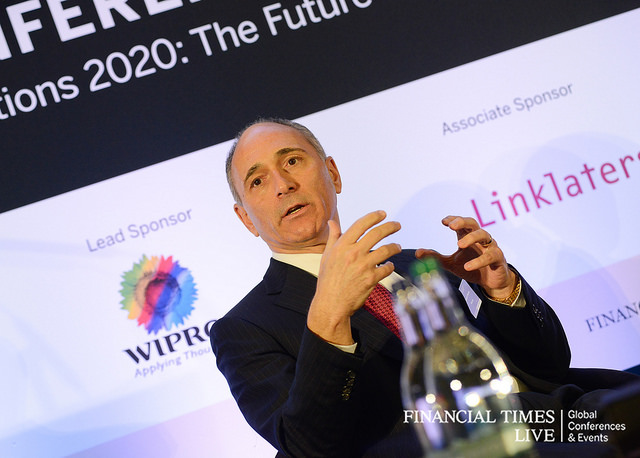All aboard! The revolution train is going, going, gone…
Traditionally, there are winners and losers when large-scale, technological change occurs. 'Creative destruction', Schumpeter called it. But who will be the winners and who will be the losers?

At the FT Global Pharmaceutical & Biotechnology 2014 conference last month, there was an almost tangible optimism amongst the speakers: in the coming years, technological progress will solve an unprecedented amount of health issues. Hanno Ronte, partner at Monitor Deloitte said that we could not be in this room without feeling optimistic and the reason for this could be summarized in one word: data. Joe Jimenez, CEO, Novartis, similarly said that technological advances will help us target diseases in new ways and that we are actually on the brink of a renaissance. The VP of Bioelectronics at GSK, Kristoffer Famm, might have hit the nail on the head when he said that the combination of the advances in different technological areas means that we are looking at a revolution on several fronts.
Revolution, renaissance, change – I feel like going up on the barricades. I can't really argue with anything that was said: the technological advances are undeniable, and we certainly are standing on the brink of a new revolution in human development. However, I am not so sure that pharma should feel so optimistic about all this. Because, when the new era comes, the old era must go, and with it all the ones that didn't have the brains, the guts or the power to adapt. Does pharma have it to change?
When change like this is on the horizon, it's time to start taking initiative. You want to be the director, not part of the orchestra".
There was surprisingly little discussion on this minor detail at the conference. Somehow there seemed to be some kind of implicit assumption amongst all attendees that these great opportunities in the coming five to ten years would 'automatically' be taken up by pharma.
However, Hanno Ronte mentioned three ways that data will change the playing field in the coming years.
- Patients will change their relationship to the system as they get increasing control over vast amounts of their own - and comparison - data. They will also become more demanding when it comes to outcomes.
- Data infrastructure will become the nerve centre for the industry in the future: cloud solutions, predictive analytics, CRM, CLM, PRO, outcomes data, and so on.
- Boundaries of business will change. There will be more partnerships and “new” companies will start talking about science and R&D.
Each of these three implies a great challenge for pharma. First of all, pharma has almost no relationship with the consumer. If asked, most patients can't even name a pharma company. Pharma is not very well-thought of by the physicians and payers (and the industry desn't know what to do about its bad reputation: see eyeforpharma's Industry Healthcheck p. 10. So it has definitely a long way to go when it comes to customer experience – whoever the customer may be.
Secondly, data infrastructure is not pharma's strongest point. In fact, the industry has still quite some way to go to be anywhere close to retail, travel and automobile industries in marketing personalization and CLM. How is it supposed to effectively take on big data in clinical? Well, one way might be through partnerships with the guys that do have data infrastructure as their main focus, you might say. And that brings us to our third point.
Pharma needs to partner up in order to survive beyond 2020. But it can't wait until 2020. It needs to start happening now. When change like this is on the horizon, it's time to start taking initiative. You want to be the conductor, not just part of the orchestra. Pharma is in a good seat as it has several things others don't: drugs, indication knowledge, financial clout and so on.
What becomes clear when you look back at previous occasions involving significant creative destruction is that you have to be a protagonist and a part of the change in order to get a piece of the riches on the other side of the rainbow. There are countless examples from LP disc makers turning to CD, to camera film makers going digital, to typewriter producers going electronic. A popular and maybe closer and more pertinent example is that of IBM, morphing from a computer hardware company to an service-based IT solution provider. IBM took charge of its own destiny and became an orchestrator of the bigger picture. In the same way, pharma needs to take charge and become the conductor of the entire healthcare solution process. Or someone else will be the winner.
